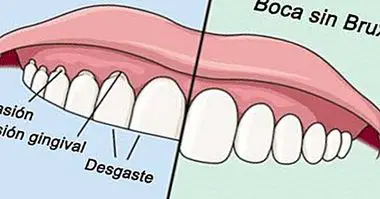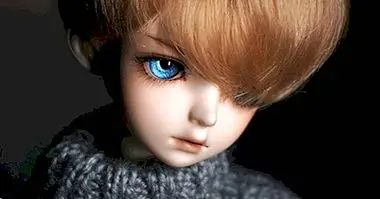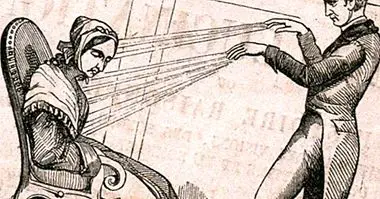Dysmorphophobia: causes, symptoms and treatment
All at some time in our lives we may have been bothered by some physical defect or overwhelmed by some part of our body that we do not appreciate. But ... what happens when a small complex becomes pure obsession?
Dysmorphophobia is the name of what is known as body dysmorphic disorder, which is framed within somatoform disorders. Literally, is the phobia or exaggerated rejection towards a part of one's own body .
Dysmorphophobia: what exactly does it consist of?
We are talking about a problem of distortion of body image, therefore, the symptoms are related to the obsession with a specific part of the physical aspect of the subject .
The person who suffers, feels a constant and excessive concern some physical defect, whether real or imagined. If such a physical defect exists in reality, the levels of anxiety experienced are exorbitant, as they perceive it in an exaggerated way, and may have significant emotional problems or social isolation. It is important to point out that we are not referring to a self-image problem related to eating disorders (as in anorexia) or sexual identity (which involves rejection of one's own body, specifically, the genitals).
Causes and beginnings of this psychological disorder
This type of problem usually begins in adolescence, where the greatest physical and bodily changes occur, and decrease with age, although it can sometimes persist into adulthood.
It has been studied that the dysmorphophobia appears in equal measure in men that in women , although it could be thought that the pressure by the physicist demands more to the feminine gender. According to the etiology, obsession with a part of the body is more common among upper-class young people, with few or no physical defects, but who magnify and make the center of their lives. The tendency to an anxious personality, low self-esteem or having been the victim of some type of harassment or mockery in childhood, may predispose to suffer this type of problem.

The "cursed parts" of the body
According to various studies on the subject, lThe typical areas that are the object of greatest obsession are: defects in the skin (spots, acne or wrinkles on the face), teeth, chest, scars, facial asymmetry, lips, nose, abdomen, ears, chin and, in men, also, the genitals.
The feeling of anguish for obsession can lead people who suffer from it to true emotional imbalances related to depression, anxiety attacks, low self-esteem and social isolation when thinking that everyone sees their "defect" in the same way.
Feelings of shame or social inadequacy accompany them constantly, as well as comparisons with other people's physiques. It is very frequent that associated with this obsession, comes a compulsion to try to reduce anxiety. In this sense, the person can fall into a real ritual of aesthetic care, makeup abuse , creams, or type of clothing to camouflage or divert attention. Some affected compulsively check their image in mirrors, while others avoid them at all costs.
The culture of Photoshop and cosmetic surgery as a solution
The current reference models transferred from the media, in many cases trasladan unattainable beauty standards , which permeate more vulnerable people by having a misperception of real beauty and a distorted or exaggerated perception of their imperceptible or imaginary physical defects.
This obsession with the physical affects all kinds of people, also accentuating if they have a public image or live on it and have a high status. Lately we have seen how in some celebrities or personalities, aesthetic surgery treatments have had as fruit some physical changes that have little to do with the face of origin. In the majority of the occasions, the public opinion values that the surgery not only was not necessary, but the results have not been good. We will only have to remember the faces of some celebrities, after their last "touch-ups", not only because there are no signs of natural aging, but because they have lost their most characteristic physical features. And is that Major and minor plastic surgery is being the famous method to appease anxiety and encourage obsession with physical perfectionism .
The problem is not on the surface
The problem is that the physical changes or improvements that occur at the body level thanks to the magic of surgery, they manage to reduce anxiety momentarily and in the short term, but soon the obsession reappears .
The reinforcement with the surgery is almost immediate but it is not maintained because the problem is sustained by bodily distortion, body dissatisfaction, low self-esteem ... so that after a while, they feel dissatisfied and resort to intervention again.
How to help these people?
If there are no major disorders associated, It is very important to help these people make a realistic adjustment of their own image as well as a deep work in self-esteem. Part anxiety for the physical is maintained because the person does not value other areas of his life, and make that defect a whole.
On the other hand, It will be essential to expose oneself to enjoy social relationships regardless of their own valuation . The rational acceptance of the own defects but also of the own personal resources are the key to reorient the sufferers of this type of problems.



















